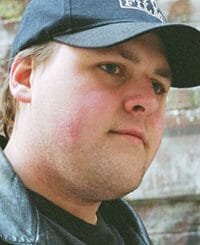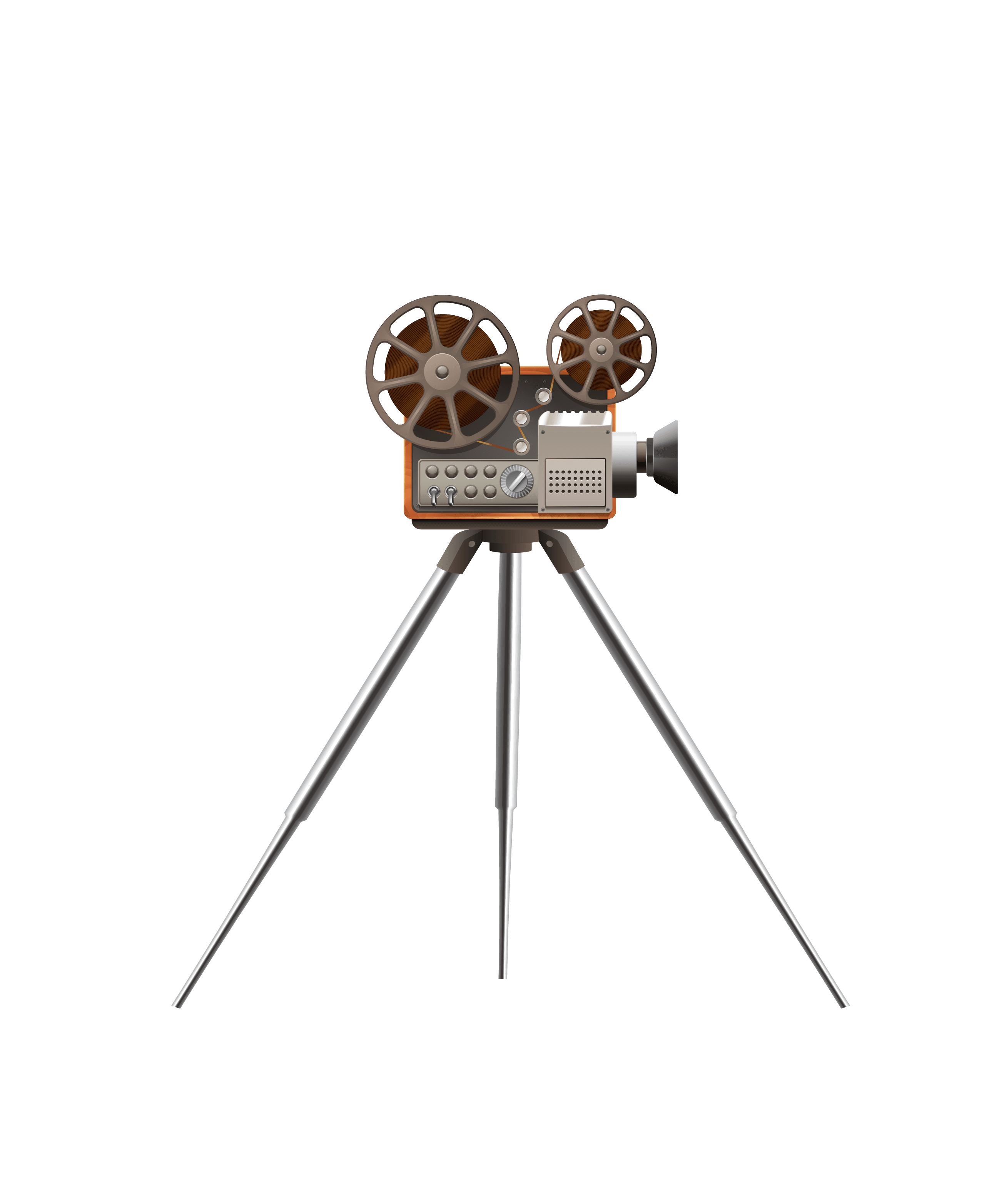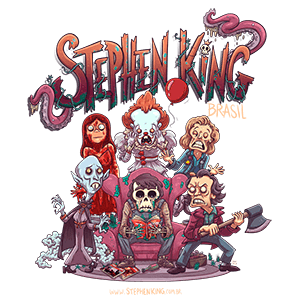Jay Holben
He is the man behind Paranoid Dollar Baby Film.
SKSM: Could you start with telling me a bit about yourself? Who are you and what do you do?
Jay Holben: Wow. That’s a question for the ages, isn’t it? My name is Jay Holben, I’m a filmmaker in Los Angeles. For more than half a decade I’ve been working as a cinematographer on independent films, shorts, commercials and music videos while trying to work toward a career as a director. Prior to that I worked as a chief lighting technician and before my work in motion pictures, I worked for many years in legitimate theater as everything from a stagehand to stage manager, from master electrician to master flyman, and from lighting designer to director. Making Paranoid in 1999 was my first step toward the directing chair, professionally, and my first time back at directing since a short film that I made in 1994 back in Arizona, my hometown. Today, with several more short films and commercials under my belt as a director, I am continuing to pursue that career path while producing independent work and continuing work as a cinematographer.
SKSM: When did you make Paranoid? Can you tell me a little about the production? How much did it cost? How long did it take to film it?
Jay Holben: We shot the main body of principal photography on Paranoid on May 9, 1999 in just a single day – although I had been doing “second unit” and insert work without crew or cast (a few shots at a time) for several days prior to May 9th. That Saturday was the only day with cast and full crew and we shot the majority of the film in that day. Basically I was producing a number of independent projects – shorts and speculation commercials – all at the same time and I found that I had a window during that production rush to direct something myself (something I hadn’t done in five years). One of my philosophies of producing independent work on a limited budget is to group several projects together to share resources, that way each production only pays a fraction of the hard costs associated with equipment and services. Film costs are always a delicate subject as most people don’t want to really talk about what they spent. In my case, because of the multiple projects and because I was able to ask many favors and donations from companies I had done business with in the past, Paranoid was shot on 35mm and completed for just over $3,000. A far cry from most of the $50,000 short films that I have worked on.
SKSM: How come you picked Paranoid: A Chant to develop into a movie? What is it in the story that you like so much?
Jay Holben: I have always loved the poem of Paranoid. Back when I was active in speech competitions in high school, I performed Paranoid: A Chant at several tournaments and did very well with it. When I realized that I had a window of time of just a single day to direct my own project, I knew that I had to find a strong piece of material that could be contained and photographed in that one day. I’ve been a King Constant Reader for many years – since the early 80’s when my brother gave me a copy of Thinner – and I immediately started thinking about Stephen’s writing as something to adapt and Paranoid was the first thing that came to my mind. Not only have I always loved the poem and always felt that it had an incredible and visceral visual sense to the prose, my idea of it was primarily housed in one location with one actress – perfect for the limitations of my shoot. So I went for it. Also, I loved the challenge of bringing a poem alive on screen. I’m often drawn to the subjects and material that most people stray away from: a single character trapped in the corner of a room, no real spoken dialogue, no character interaction – most filmmakers told me it wasn’t a good idea to make the film, and that made me love it more. I’m always up for a good challenge.
SKSM: How did you find out that King sold the movie rights to some of his stories for just $1? Was it just a wild guess or did you know it before you sent him the check?
Jay Holben: There’s a mild misunderstanding here to clear up. Stephen’s Dollar Deal has been relatively famous in the King community. The author’s philanthropic policy of granting specific permission to student filmmakers (and in my case a struggling independent looking to move up the ladder) to adapt his short work rose to public prominence first with the Night Shift VHS collection in the late 80’s and then with the history behind Frank Darabont’s acquiring of the rights to The Shawshank Redemption. The misnomer is that people believe that Stephen sells the rights to these stories for $1 – and that’s not the case. Stephen grants his PERMISSION to the filmmaker to adapt the story, but no rights are granted. The rights to his stories cost thousands and thousands of dollars. What this means is that the filmmaker who is honored with Stephen’s permission may make the adaptation and show it non-commercially (in film festivals, classrooms and as examples of their work). If there is any profit, sale, commercial presentation or wide distribution to be made, then a proper negotiation has to take place for the actual rights to the story. This is an important distinction to make, as I’ll detail more in one of your next questions. Being an avid King fan, I knew of his Dollar Deal policy and was quite honored that he allowed me the permission to make this adaptation.
SKSM: Was there any funny or special moment when you made the movie that you would like to tell me about?
Jay Holben: Actually yes. One of the shots in my screenplay required a cockroach to crawl across the floor. I tried to find a cockroach around my home in the two weeks prior to the shoot, to no avail (I suppose in normal circumstances, that would be a good thing). In desperation, I called a company that specializes in providing insects to motion pictures, and inquired about getting a roach. They had roaches and would send them out in batches of three with a “handler.” For transportation, handler fee and the roaches themselves, it would be $300. $100 a day, each, for a cockroach! As that would have been 10% of my entire budget, I declined their services and kept looking for a “non-union” roach. I lucked out while shooting one of the other projects in Hollywood’s Griffith park where I stumbled upon a pair of dung beetles (actually, in my book, much creepier looking than a simple cockroach). With the help of a fellow crew member (she did the dirty work, actually) we acquired the beetles and gave them temporary housing in a glass jar with dirt and dung until their day before the cameras. When that day came, I had to find a way to control the beetle during the shot. As I was shooting the “second unit” or insert shots during several nights before our main shoot (after I had finished a full day working on one of the other projects I would take the equipment home with me, unload it into my apartment, set up a couple of shots, shoot them and then go to bed to get up the next morning, reload up the equipment and go back to another shoot all day) I was all alone and had no one to help me control this roach while I operated the camera and pushed my own dolly. So I grabbed a large 44 ounce drinking cup and placed it over the beetle on the floor. When I needed her to walk across the floor, I’d lift the cup and let her go. Then I’d capture her back in the cup – gently slide the cup “back to one” and take another shot. After half a dozen shots or more, I put the beetle back in the jar and went to set up the next shot with the beetle crawling behind a toilet. After I lit that shot and had the camera set, I went to get the beetle only to find it on its back kicking in what appeared to be great agony. “Oh my God, I’ve killed it!” I thought and – about a second later – I realized how COOOL it looked! So I took the writhing beetle and put it on the floor and shot one of the more memorable moments in the film with this beetle on its back kicking and thrashing violently. When I was done with the shot, I put the beetle back in the jar – apologized for killing it – and went back to work. An hour or so later, passing by the jar again, I saw the beetle was just fine and moving around as if nothing had happened. A few days later, telling this story, I learned that certain types of insects – roaches and beetles – if they feel their life is threatened can spontaneously give birth. Amazingly, that was exactly what was happening. If you look at that moment in the film and freeze the frame – you can actually see an egg sac protruding from the beetle’s rear. After shooting the beetles were released back into the wild where, I’m told, they named the children after me.
SKSM: How does it feel that all the King fans out there can’t see your movie? Do you think that will change in the future? Maybe a video release would be possible?
Jay Holben: This is a question that I get often, and it relates back to my explanation of the Dollar Deal above. The reality is that perspective can’t be further from the truth. Stephen has been EXTRAORDINARILY generous and supportive of Paranoid and has allowed it to be seen in many venues thus far. When you consider that I don’t own the rights to his story, I have merely paid him $1 as opposed to several thousand, the fact that he has allowed anyone other than my mother to see the film is remarkable. It is a true philanthropic policy that he has. In this specific case, Paranoid was the first Dollar Baby to be allowed to be released on the Internet (although Stephen’s representatives limited that time to eight months in our agreement) and Stephen gave me permission to release the film on Total Movie Magazine’s Inside DVD which had over 100,000 copies pressed and sold. Really, other than The Boogeyman and The Woman in the Room – which were both released commercially on VHS in the late 80’s – Paranoid has been the most widely released Dollar Baby to date. I have no complaints whatsoever about where I’ve been able to show this film. As a fan myself, I understand the desire to collect all the Dollar Babies – and I’ve attempted to do that by contacting as many of them as I can – but I also understand and completely respect Stephen’s position. If he allows these films to be widely released for just $1 – then he’s thumbing his nose at the real pros and studios who pay handsomely (and appropriately) for the proper rights to his work. To my knowledge, there isn’t another author of Stephen’s stature that has such a generous policy to support young filmmakers. So, for the savvy fan, there are copies of Paranoid out there. There is always the potential that there will be another venue for Paranoid’s release – although at this time nothing is planned. Really this film was just made for my “show reel” – my calling card as an example of my directorial skills – and the fact that it has been publicly seen at all is amazing. I’ve seen the Total Movie DVD’s on eBay and they seem to do fairly well. Also – when we released the high-resolution version on the Internet from the official website at www.paranoidthemovie.com, we had more than 36,000 downloads of the film – so there are a LOT of fans that got to see it and, for that, I am extremely grateful to Stephen for all his support.
SKSM: Did you have any personal contact with King during the making of the movie? Has he seen it (and if so, what did he think about it)?
Jay Holben: Not during the making of it, but I was honored that Stephen called me when he saw the copy of the film I sent him. It was a short, but fantastic conversation mostly asking about me and my background as a filmmaker. In his own succinct way, he did offer this opinion of the film: “You’ve got a good film here, I liked it.” And for me, what more do you need?
SKSM: Do you have any plans for making more movies based on Stephen King’s stories? If you could pick – at least – one story to shoot, which one would it be and why?
Jay Holben: I would love to adapt another King story. There are so many that I love so much that it’s hard to narrow it down. I think far too often the adaptations of his work veer off into the goofy territory and he’s given a bad shake (especially in television), but when his work is adapted correctly, it can be an amazing film (even Oscar worthy!). Currently I have no plans to adapt another, but I’m always open if Stephen is.
SKSM: Thanks for taking the time to answer my questions. Is there anything else you want to say to the fans that read this interview?
Jay Holben: The experience I have had after making Paranoid, and the extraordinary support from the Stephen King fans has been overwhelming. I still get regular e-mails asking about the film and how they might see it – even three years after it’s release on DVD and on the Net (it was also a top rated short on iFilm.com for several months). It has been wonderful to become a more intimate member of the King community and I’m really thankful for all the kind words and support. Keep an eye on www.adakin.com to see what we’re up to next!
If anyone is interested in reading more about Paranoid – they can visit www.paranoidthemovie.com and especially www.paranoidthemovie.com/directors_notebook – which is an intensive section on the making of the film from pre-production to post-production.
All the best,
Jay Holben, Director
Los Angeles, CA
















